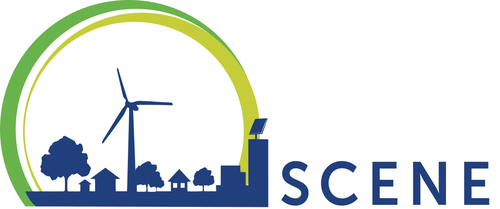This post forms part of the SDG series at Scene Connect for Global Goals Week. As global representatives gather at the UN Headquarters in New York for the Sustainable Development Summit 2019, we reflect on how our own projects support the 17 Sustainable Development Goals.
In this post, Vijay describes HEED, a collaborative project between Scene, Practical Action and Coventry University which seeks to address the low levels of energy access experienced in refugee camps and displaced communities. Drawing on his visits to Rwanda and Nepal, Vijay shares his lessons learned so far, demonstrating how through engineering expertise and sociological research, we are learning how to energy provision can improve in displacement settings.
What are you?
Humanitarian Engineering and Energy for Displacement, but do call me HEED.
OK, tell me more
HEED is a Global Challenges Research Fund (GCRF) project. The GCRF is a £1.5 billion UK Government research fund that addresses the challenges faced by people in developing countries. HEED seeks to better understand and provide some solutions to the very difficult issue of energy poverty that exists in refugee camps and in displaced communities throughout the Global South, through case studies in Rwanda and Nepal.
Wow, that's a huge issue.
Yes, it's very serious. According to the UNHCR there are almost 71m forcibly displaced people globally, of which 41.3m are internally displaced and 25.9m are refugees. For comparison, the population of the UK is around 65m.
Furthermore, refugees and internally displaced persons (IDPs) often have little access to electricity and clean cooking technologies. Experts from the Moving Energy Initiative (MEI) project estimate that over 90% of those in refugee camps do not have access to electricity, and over 80% of forcibly displaced people cook with the most basic cooking fuels, such as wood and charcoal (Lahn and Grafham, 2015; Lehne et al., 2016).
The MEI estimates from Burkina Faso and Kenya suggest that refugees are currently spending around 14–20% of their monthly expenditure on energy products and services (Grafham & Vianello, 2018), and some even up to 50% of their income on fuel (Rivoal, M. & Haselip, J. 2017).
The backyard of a home in Nyabiheke Camp, Rwanda. (HEED, 2019)
What can HEED do about it?
HEED focuses on the lived experiences of Congolese refugees living for protracted periods of time in three refugee camps in Rwanda (Nyabiheke, Gihembe and Kigeme), and on internally displaced persons (IDPs) in Nepal forced to leave their homes as a result of the 2015 earthquake. The aim of the project is to draw upon social science and engineering expertise to better understand displaced persons’ energy needs and to identify solutions which produce socio-technical systems which encourage community resilience and capacity building.
What have you found so far?
HEED is more a research project, than an energy delivery exercise. However, there are lessons to be drawn from both aspect. We have initiated relatively small energy projects in the camps in Rwanda and villages in Nepal, and what is abundantly clear is that modest energy provision makes a genuine difference. We have seen evidence of children studying under the light provided by our project’s micro-grid, whilst social events - including dances – have taken place in the community hall after sunset!
Insights from the research are only just beginning to emerge, but you are invited to take a look at the project’s open access Data Portal to form your own understandings through the survey, energy usage data, and photographs that we have made available.
And what’s next?
In November the project team will be going back to Rwanda to work with refugees to co-design the way that they interact with and manage their energy systems. For example, we will be designing a system for sharing the finite electricity that is available through a solar powered micro-grid, amongst community buildings. The project will be writing up its findings and then offering advice to practitioners in the humanitarian and private energy sectors. You can keep up to date via the project’s Data Portal and website.
How is this relevant to the SDGs?
193 countries adopted the UN’s 2030 development agenda, which outlines the Sustainable Development Goals. Within this are two crucial intentions to leave no one behind, and to endeavour to reach first those who are furthest behind. With ‘unprecedented’ levels of global displacement, there is an urgent need for continued and growing efforts in support of these vulnerable groups – HEED plays a small part within the growing field of humanitarian energy.
- Vijay Bhopal





